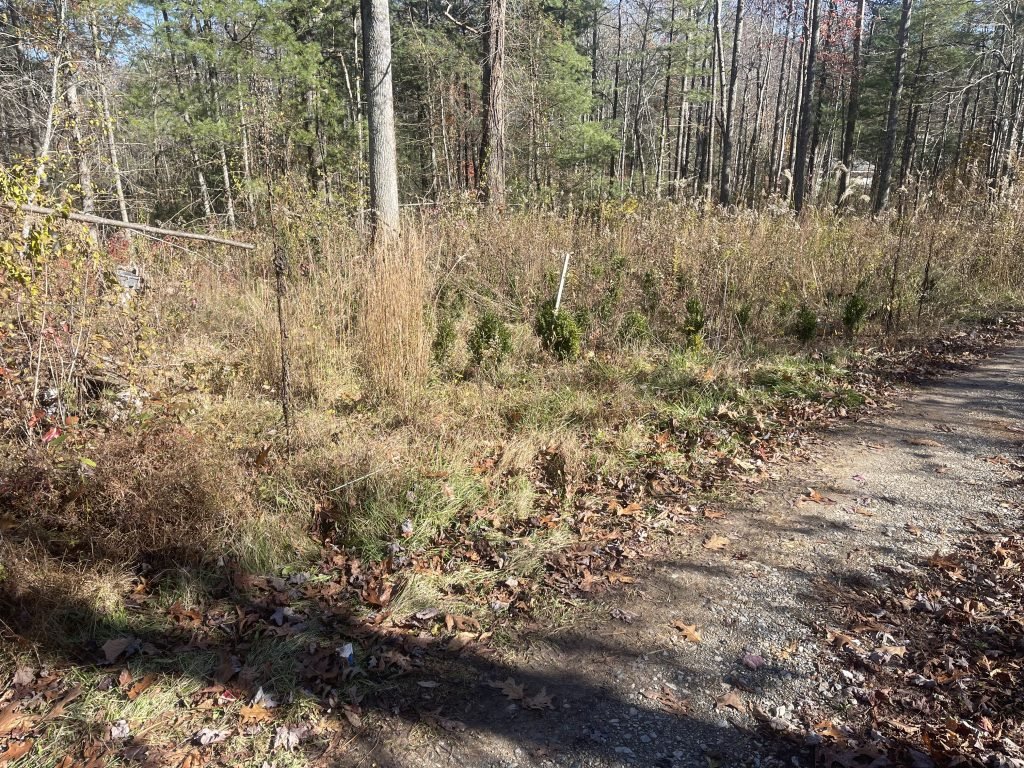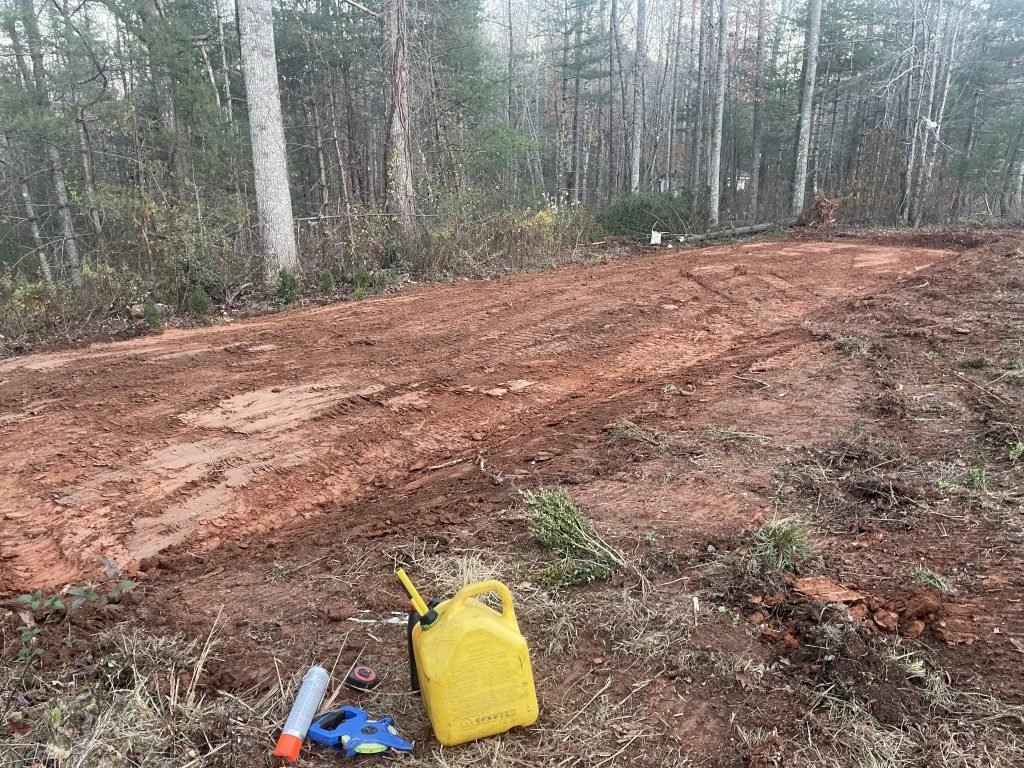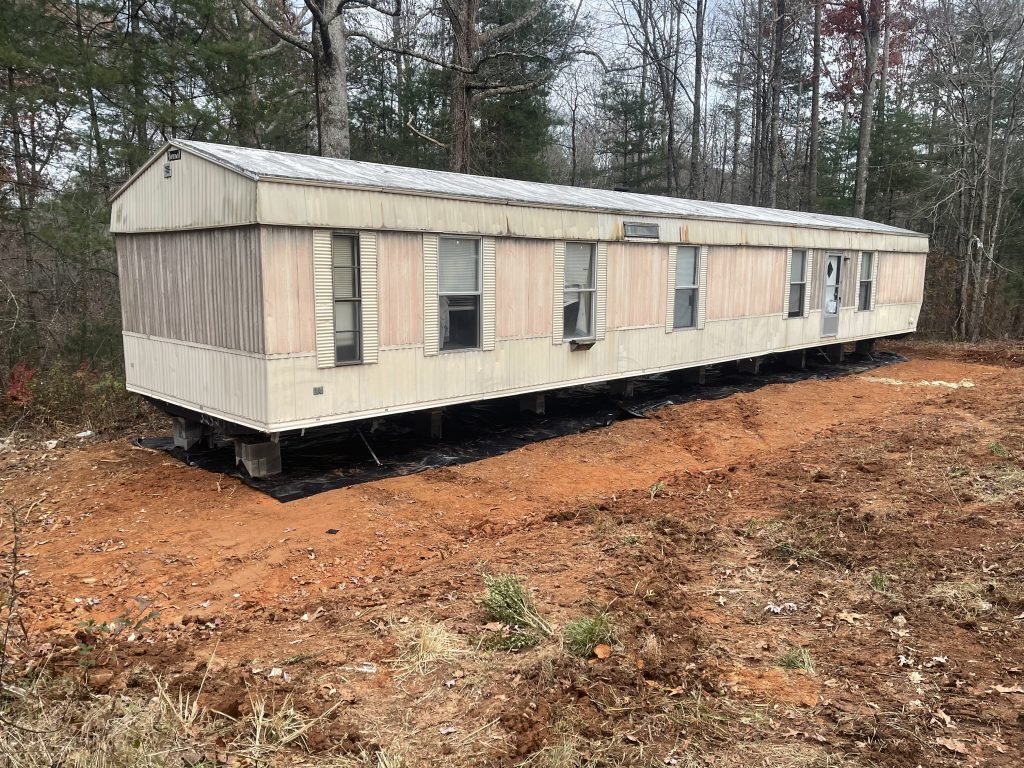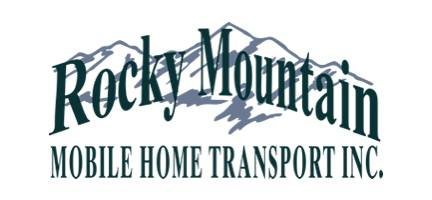Zoning, Permits, and Title
First things first! Make sure the home is paid off!
Once you know the home is paid off and you have the appropriate documents you need to make out the location of the home. Many counties require you to be a certain distance away from the property line, power line, and septic tank.
Finally obtain any building and moving permits necessary
Preparing the Site for Relocation
The next big step is grading. You will need a septic tank and drain field installed downhill from the site, preferably after the home goes in. Mark out the tank location if installed.
The site must be graded with a crown in the middle and 6” of fall for the first 10’ on all sides of the home. If this cannot be achieved, a french drain will be required.
Homes with a permanent block foundation may be backfilled after the home has passed inspection.
Finally, the roads must be cleared for the same width of the home plus 2 feet on either side and much wider for turns, plus 16 feet tall. The roads must be level and a minimum of 137” wide.
Example of Grading a Site for Positive Drainage

Start Point

Graded

Completed
Type of Equipment Used
- House Tug – Remote control track machine made for moving mobile homes. Can be used with low profile metal street tracks, or rubber tracks at an extra cost.
- Platypus – Remote control track machine made for jacking up and sliding the back end of the home.
- Jadde – Dolly with 4 steering wheels to lift and level the back end of the home.
- Toter – Our Toter trucks come standard with a 6 way precision hitch.
- Crane – A crane may be used for a modular home that needs to be lifted off the frame and set on a foundation.
Things To Look Out For
- Corrugated Frames or Bent Frames
- Wood Rot
- Narrow Roads and Tight Turns
- Trees and Branches
- Soft or Unlevel Ground
- Low Power Lines
- Steep Hills
- Holes and Ditches
Services
Below is a list of services that will be required to relocate your home. Make sure you understand what is included in your purchase. The basic delivery includes setting the home and anchoring it down. The other services are all optional and are often subbed out to other contractors.
- Grading and Site Prep
- Poured Footers (Poured footers are often not required.)
- Basic Setup and Anchoring
- Vapor Barrier
- Siding
- Interior Trim
- Plumbing
- Electric
- Skirting
- AC
- Decks
Final Check List
Home Inspection – Wood rot or underbelly/bottom board repairs including insulation replacement.
Plumbing Inspection – The pipes must have 1/4” per footfall and have necessary cleanouts. The pipe must be supported 4’ on center to the frame or floor joint with a galvanized pipe strap.
Drain lines must be run outside of the skirting of the home.
Water lines must be protected from freezing and might require a water regulator and shut off. There should be absolutely no gaps in the waterline insulation.
Grading Inspection – There should be no water under the home and the pad needs 6” of fall on all sides of the home for the first 10’ or alternative drainage solution.
Deck Inspection – Check local guidelines
AC Inspection – HVAC must be supported above ground. AC and furnace vents must be run outside the skirting and have vent hoods.
What to expect when moving a mobile home.
Moving a mobile home requires meticulous planning and preparation. Here are the essential steps involved in a successful mobile home move:
- Obtain the necessary permits: Prior to moving your mobile home, it’s crucial to secure permits from the local government. These permits can include tax, health, building, and moving requirements.
- Hire a licensed and insured mobile home moving company Like Us Rocky Mountain Mobile Home Transports INC: It’s key to work with a reputable, licensed, and insured mobile home moving company that specializes in transporting mobile homes. Their expertise and well-equipped team ensure a smooth and secure relocation.
- Prepare the mobile home: To facilitate a safe transition, thorough preparation is key. Begin by decluttering and organizing your belongings, optimizing packing efficiency while minimizing stress during the move. Disconnect all utilities and appliances, such as gas, water, and electricity, ensuring they are properly secured for transport. Additionally, inspect the roof, windows, and doors to verify they are sealed and in optimal condition.
- Lift and load the mobile home: Our skilled team will expertly lift your mobile home onto a specialized trailer, meticulously securing it in place for transportation.
- Transport the mobile home: Your mobile home will be transported to its new location, following a meticulously planned route that considers potential obstacles like low bridges or narrow roads. Our experienced drivers ensure a safe and timely move.
- Set up the mobile home: Once the mobile home arrives at its new destination, it must be properly set up and secured to the ground. Our team will level the home and anchor it securely, guaranteeing stability. Utility connections, including water, gas, and electricity, will be handled by the respective professionals to ensure a seamless transition.
- Obtain inspections and permits: Local authorities will conduct inspections to ensure your mobile home adheres to safety and building codes. Additionally, acquiring permits for any necessary renovations or additions will ensure compliance with regulations.
Trust our experienced mobile home moving team, to handle your relocation with precision and care. Contact us today for a stress-free and efficient mobile home moving experience.





